Amid the riotous chorus of song in May it’s easy to miss one of our most familiar birds.
The blue tit’s typical song is two or three high, thin notes, followed by a rapid twittering at a lower pitch.
Tiny as they are, it’s often tricky to see who’s singing. They will likely be somewhere well above head height, and they can easily be hidden behind the leaves.
It’s something of a miracle that blue tits have time to sing at all in May, because this is an especially busy month for them, as parents.
Many of our common garden birds raise at least two broods during the breeding season. It means effort over a longer period, but it spreads the risk should disaster befall one set of eggs or nestlings.
Blue tits, however, put all their eggs in one basket, laying their one large clutch in April. The hatching of the chicks is timed for the mass emergence of new leaves in May and the emergence of the tiny caterpillars that comes with it.
They typically lay 8-10 eggs, but have been know to produce up to 16. So that’s a lot of mouths to feed, and a lot riding on the timing of spring.
Their liking for our gardens is something of a trade-off. Like many of our neighbourhood birds, blue tits evolved in woodlands, and the availability of caterpillars for their young in spring is generally higher in that habitat.
However, their ability to survive through the winter seems to be boosted significantly by garden bird feeders.
And there may be many more blue tits using our gardens in the winter than first meets the eye.
Studies have suggested that a garden with five blue tits on the feeders at any one time is likely to have 20 or more different birds passing through during the course of the day.
Blue tits are commonly found through most of Europe. For more on the ecology of blue tits in the UK, visit the BTO website.
Nightingale on the edge of town
On Saturday I left just after dawn for our local woods. It’s a brisk 20-minute walk to get there, along a main road and through housing estates. Finally it involves crossing the dual carriageway that forms the edge of town, not somewhere I generally linger.
But at 5am the traffic is sparse. You can hear things other than cars.
I’ve never heard a nightingale here before, but as I say, it’s not somewhere I hang around much. Perhaps it’s a wandering male, singing just for that particular morning, or that hour of that particular morning. Perhaps I’ve just never been here at the right moment before, in that short window of nightingale-time each spring.
Either way, it stopped me in my tracks. To know there is a nightingale on the ‘wrong’, side of the road makes me wonder what could be possible.
A little later we held a Zoom call from the woods. In more typical territory there was another nightingale, garden warblers, mistle and song thrushes, whitethroat, blackcaps, wrens, all thriving in the mix of oaks, open gorse, lakeside willow, old pines and sweet chestnut coppice.
Habitat variety is the spice of bird life here. Just a few years ago much of this slope was dominated by close-planted pines. It was simpler, and darker, and quieter.
Credit to the Forestry Commission team for opening up more areas like this over recent years, letting the light in, and the birdsong.
Thanks for reading and listening. This is instalment #18 in 2024’s cycle of Shriek of the Week. You can catch up with Reed Warbler, Cuckoo, Willow Warbler, Swallow, Green Woodpecker, Blackcap, Nuthatch, Starling, Chiffchaff, Collared Dove, Wren, Dunnock, Great Spotted Woodpecker, Robin, Great Tit, Song Thrush and Blackbird (that last one includes an explanation of how this all works in 2024).
Find more birds with Birdsong Academy this spring:
Half-day birdsong ID workshop in Stanmer Park (Brighton) - Saturday 18 May
Totally fabulous event… Really appreciate your warm human gentle teaching - thank you. - Maggie, Brighton
Dawn chorus experience with nightingales and Swedish pastries, at The Secret Campsite, East Sussex on Friday 10 May.
Many, many thanks for a beautiful and informative bird song chorus - the three of us loved it! So much info and so relaxed. - Helen, Eastbourne
Media credits:
Nightingale image by Flickr user Rob Zweers, reproduced under Creative Commons licence CC BY-ND 2.0


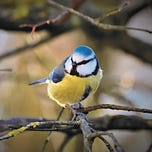






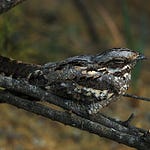
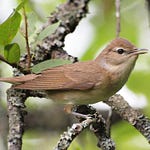

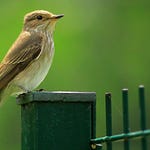


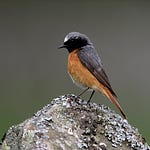
Share this post